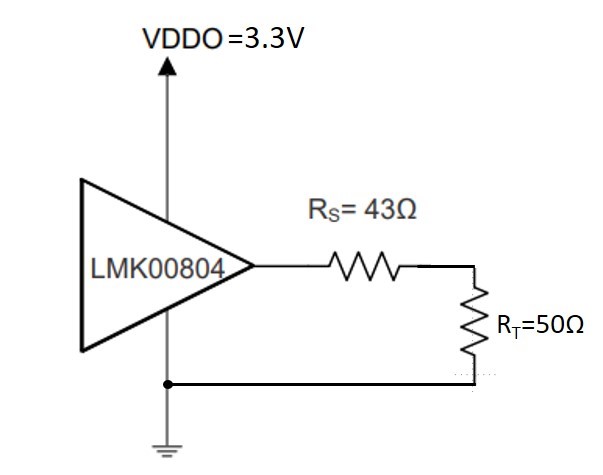Other Parts Discussed in Thread: LMK00804
Hello Team,
below picture represents a 50 Ohm load termination to VDDO/2, correct?
So I calculate current = VOH/93Ω = 2.6V/93Ω = 28mA. Doesn't this violate the IDDO Power Supply Current through VDDO of 5mA (Chapter 7.6 data sheet)?

Can I use this buffer to drive 4 x 50Ω load (each output connected to 50Ω) terminated to ground (without the 43Ω in series)?
If yes, what levels can we expect?
Thank you and Best Regards, Hans



 listed in section 11.1.2 on the datasheet.
listed in section 11.1.2 on the datasheet. 